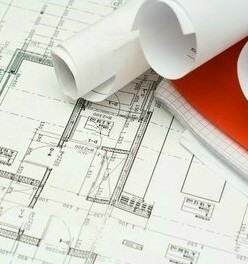
Hardwood Floor FAQ
1) Q- What's the difference between engineered flooring and laminate flooring?A- Let's start with the original term laminate flooring. Before plastic laminate floor became popular in the mid '90's those in the hardwood flooring business called today's engineered flooring laminate. It is constructed in layers similar to plywood with an actual finished hardwood veneer layer on the surface.
Today's laminate floor is a photographed image of finished hardwood and cannot be refinished, whereas many engineered products can be refinished. How many times will depend on the thickness of the veneer, or top wear layer, and finding someone knowledgeable enough to handle the work.
A- You'll find some retailers will say yes. However, those that have dealt exclusively in hardwood flooring for some time will say no. In recent times some of the big box stores and adhesive manufacturers have been advocating this procedure. Only time will tell if it's a viable procedure, but it's safe to find an alternative.
3) Q- What kind of hardwood floor can I place on concrete subfloors?
A- If moisture conditions are acceptable, there are three types of wood products available on concrete sub floors: engineered glue down, engineered floating floor, and 3/8 or 1/2 solid glue down. An engineered glue down is glued directly to the concrete slab. On an engineered floating floor, the tongue and groove are glued together and floated over a foam pad. Floating floors are also available in a glueless click together style.
More traditional 3/4" solid hardwoods on concrete can be accomplished with the addition of a plywood subfloor, used as a nailing base over the concrete. However, this raises problems with door entries and other items. Overall vertical height of the new floor will increase by 1 1/2 inches. Unfinished engineered hardwood floors eliminate vertical height issues and can be stained or finished to any desires.
4) Q- I have a particleboard subfloor. Can I have nail down hardwoods installed?
A- Many confuse particleboard with OSB(Oriented Stand board). A true particleboard commonly used in some manufactured homes do not have the holding power of hardwood flooring fasteners and will loosen. There are certain types of OSB that can be used for solid nail down hardwood floors. It is best to consult the manufacturers warranty specs.
5) Q- When should hardwood floors be installed?
A- If you're having a home built or making some renovations it is highly suggested to have the hardwood flooring work scheduled very near the end. Unfortunately too many times, builders rush hardwood flooring and don't realize the consequences until it's too late and major repairs become necessary or moisture problems caused by other work rears it's ugly head.
6) Q- What to choose? Prefinished hardwood floors or ones that are installed and sanded in place?
A- Today's prefinished hardwood floor finishes are vastly improved and are finished in controlled settings. Many offer more than six coatings whereas a normal site finished (sanded in place and finished) floor would be two or three. Prefinished warranties are exceptional but cannot be passed on from the original owner. There are advantages and disadvantages of both. Nearly all solid prefinished hardwood floors are beveled to some extent. On the other hand, a site finished hardwood floor that has been installed in it's raw unfinished form, then finished will have a flawless uniform appearance upon completion. However, maintaining the appearance requires close attention to climate control during seasonal changes.



